Have you ever gone on a quilter’s scavenger hunt?
Not a shop hop, where every shop you enter holds a new gadget and fabric to revel in. But a real scavenger hunt within one quilt?
I did that today. Let me tell you about it.
When Gary and I began our quest to build a new “barndominium” to hold both our home AND our business ventures, we bundled up all our furniture to move into a storage unit during the build. Just this past week we’ve brought more of that furniture home. Several of these pieces were wrapped in sheets and old blankets. As several of these pieces were unwrapped, I set out to launder the wrappings and put them away until needed again.
In the pile of things to wash, I found not one—but two quilts from Gary’s great-grandmother. (Great Grandma Davis lived from 1887-1964, and Gary has a few memories of her from his early childhood.) I think they were pulled into this service because they were heavily worn and showed much damage. Well, when I picked up the first one to inspect for laundering viability, I noticed right away there was more to this quilt than met the eye. A further investigation was in order.
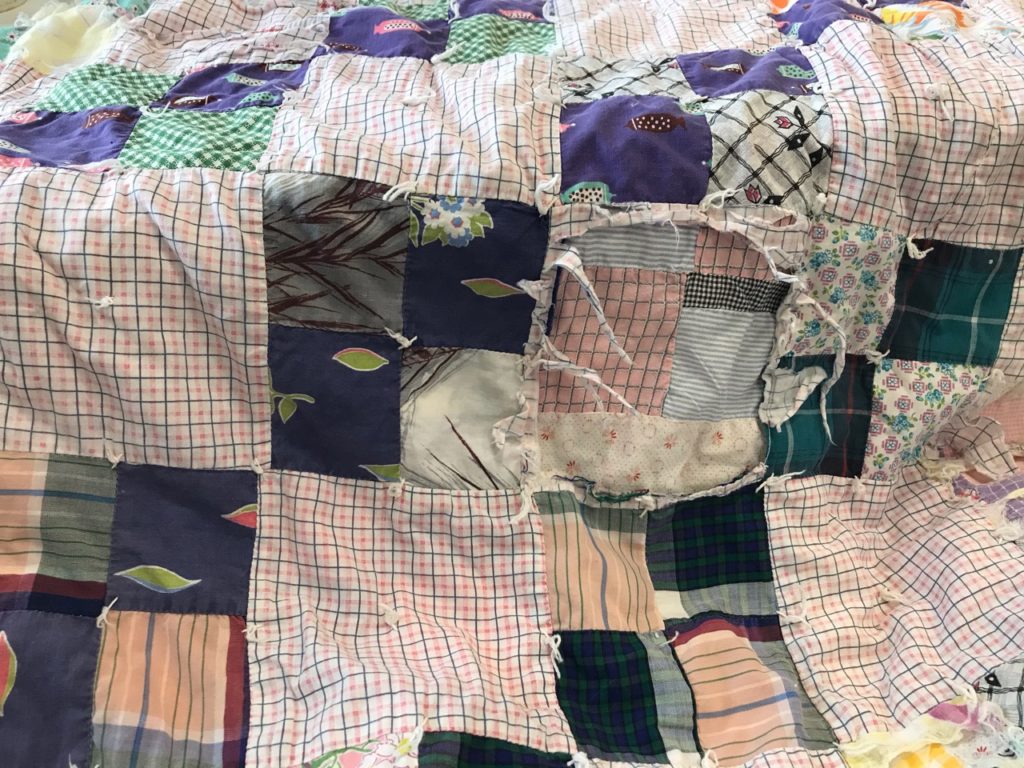
I’m glad I looked further, because this old girl held a secret inside her.
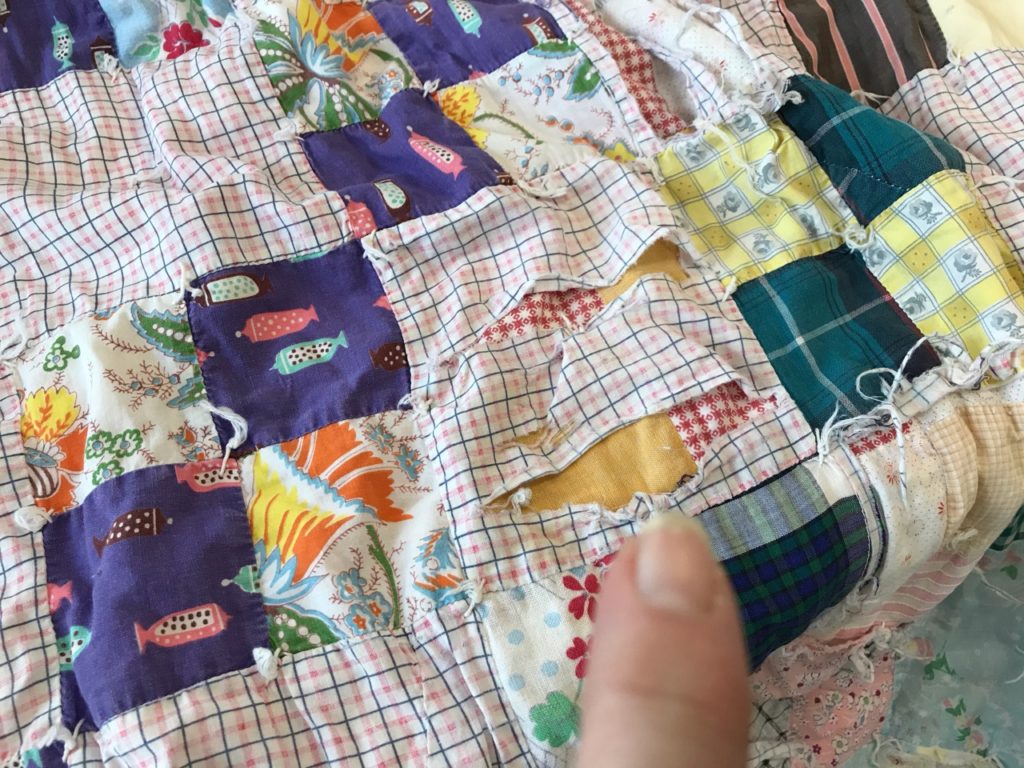
Yep…a quilt within a quilt. My fingers got itchy and the scavenger hunt was on.
This old lady was tied, and the only way to learn her secrets was to clip all the ties and separate the layers.
Once all the ties were clipped and removed, the only thing keeping it together was the binding. It obviously needed to be removed, but how. The decision was made after looking at the condition of the folded edge of the binding. It had several threadbare areas and showed a lot of wear over the whole binding.
The decision was easy…I chose to cut the binding off. Now if it had been in slightly better shape, I would have opted to carefully remove the stitching and unfold the binding with the expectation that if the backing needed a little patching, the material in the fold of the binding could provide that. That wasn’t the case, so out came the scissors.
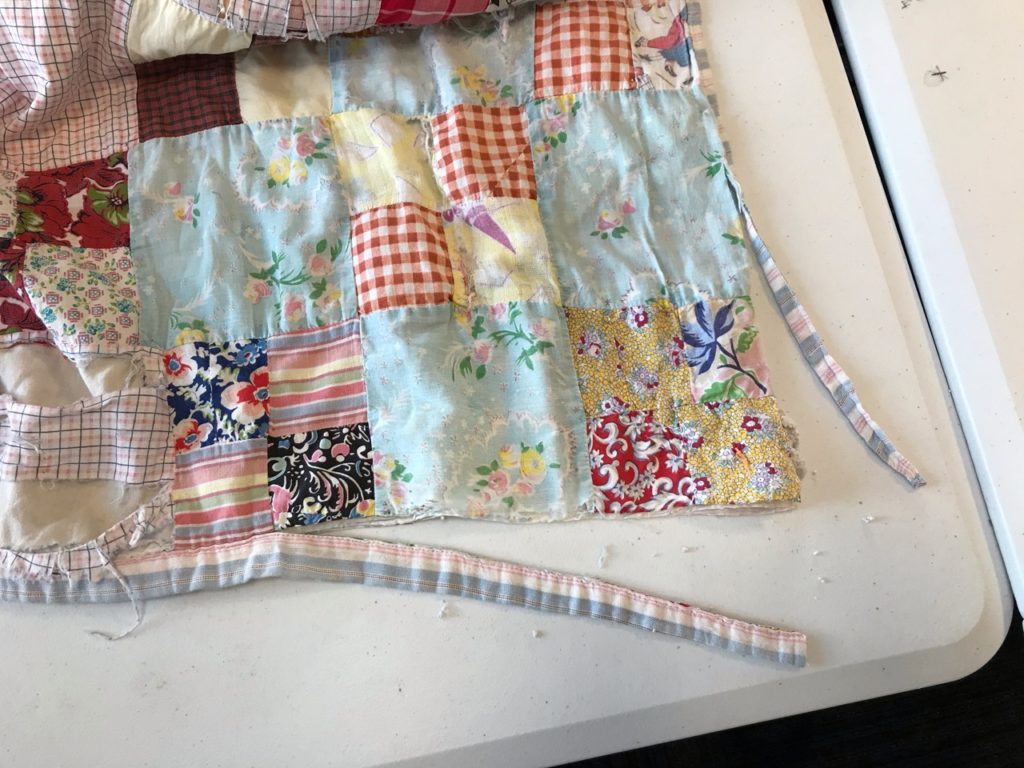
As I was cutting away the binding, the batting…or wadding… began to crumble from inside the quilt. Crumble sounds like it disintegrated, but that’s not an accurate picture of what occurred. The batting fell out in crumbs. It had long since balled up into crumbs and migrated towards its corners and simply fell out of the quilt when the fabric was no longer there to contain it.
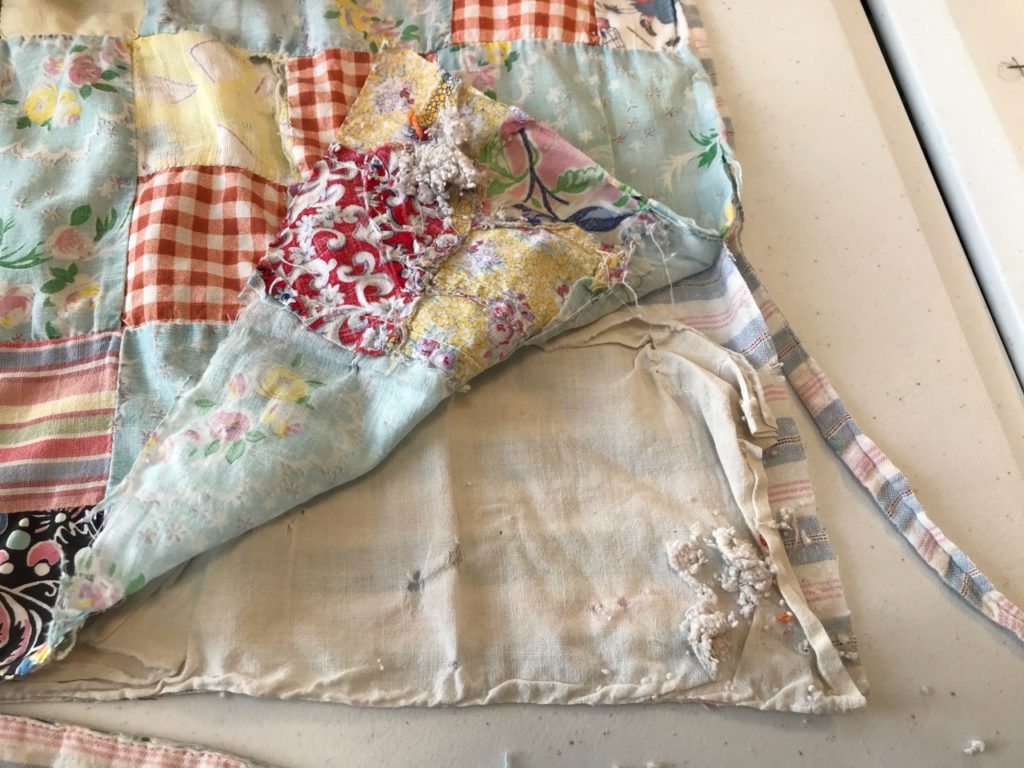
You can see what’s left of the batting in the lower right hand corner of the quilt…it’s a wad of crumpled, pilled batting. Not much of it either. I assume the rest of what used to be the batting must have fallen out of the quilt through the various holes and missing fabrics of the quilt.
Once the top was removed, you could definitely see what was inside. This little quilt was revealed. The curiosities didn’t end there. Beneath the little nine-patch baby sized quilt was not a jumbled layer of crumb-y batting, but a collection of various other fabrics which I am guessing was the original backing to the baby quilt along with perhaps some aged muslin. And what was even more curious is the layers of fabric were not stitched together, but rather laid on top of each other with the hidden quilt top over that. The batting that turned to crumbs was placed in there somewhere, but the evidence of where is a mystery.
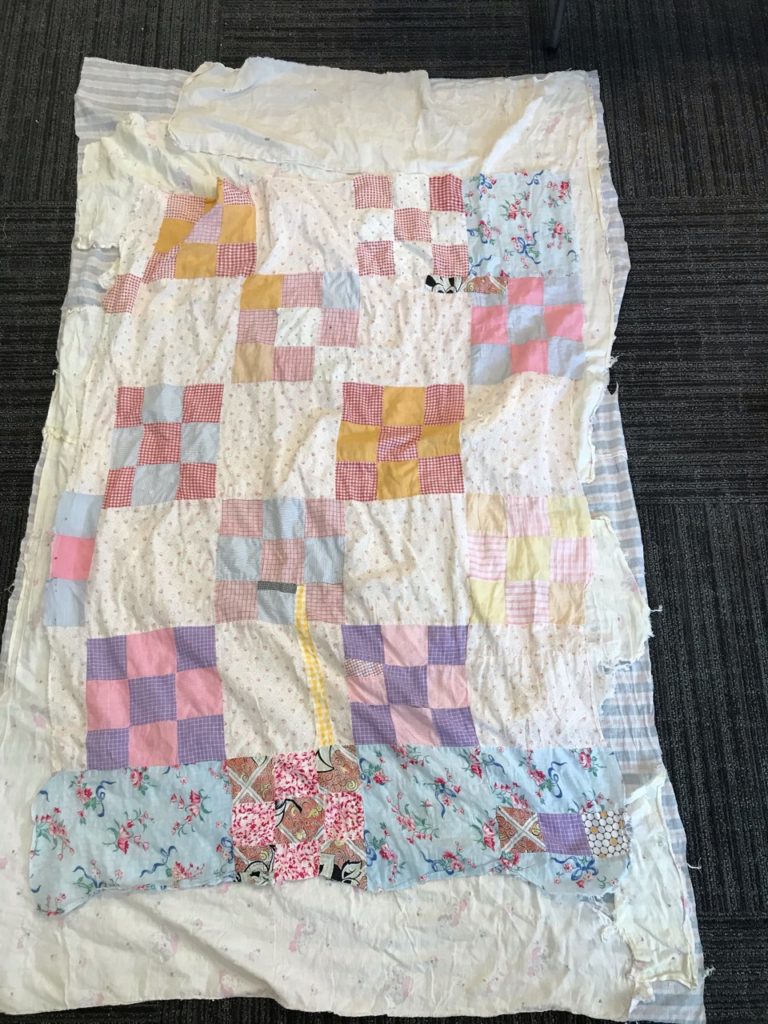
The little baby quilt top has a few other stories to tell as well, and someday I hope to learn about them. The fabrics that it’s made from look to be from the 1930’s and perhaps even earlier than that. I’ll learn more as I research the print patterns and fabric types. It does appear they are mostly from shirt weight fabrics in more feminine colors. Cottons with a variety of weaves, and perhaps a linen print as well as a lawn or batiste. All the seams are sewn by machine, but the various patches correcting cuts or holes are done by hand.
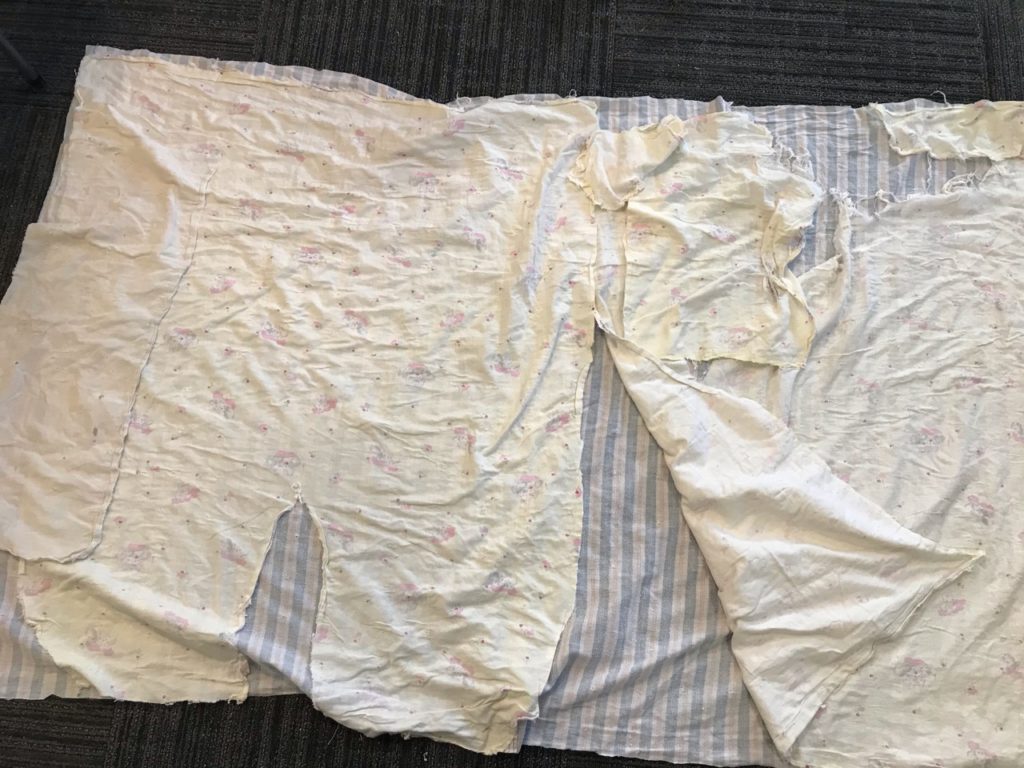
Then there is the original top. Several large holes and tears are present, and some places the fabric is missing altogether. Other places within the body of the top are sound enough to save and add together.
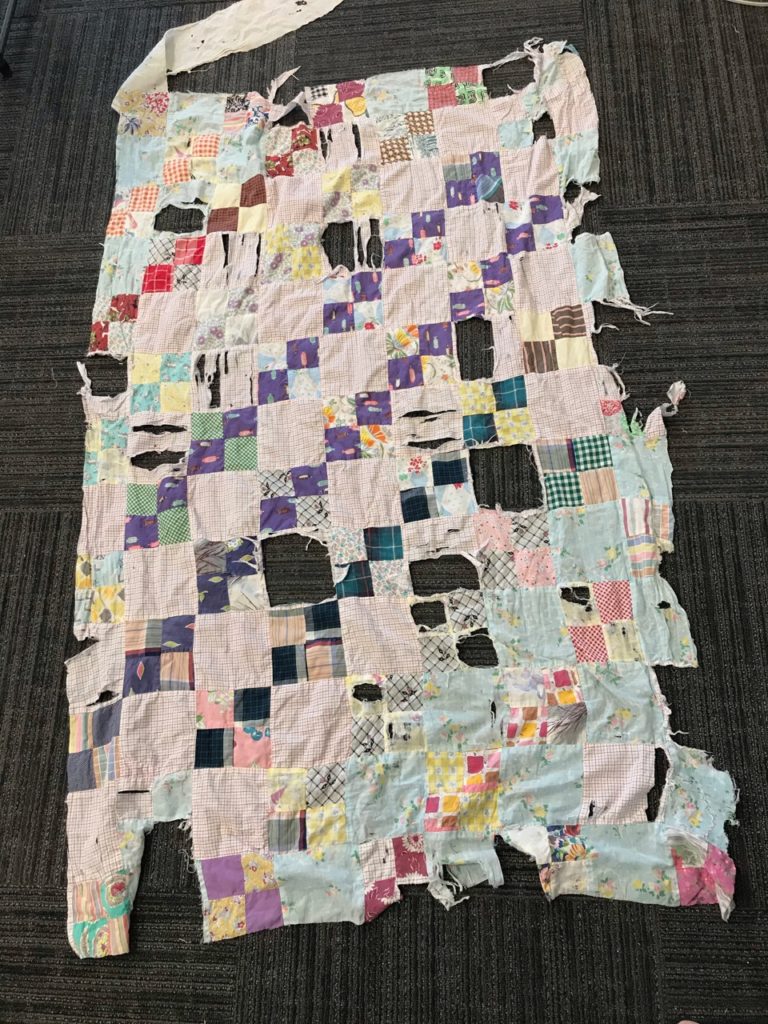
Now that everything is separated into its respective layers, I’ve got some choices to make as to how best to proceed. Through all this process, my goal is to preserve as much as possible to create a useable top which will become another quilt. It will take some time to determine what to do, but I’m up for the challenge. It’s a great test of my skill set, and I’m happy to bring to life something that was most likely destined for the garbage bin.
I know I have another “prize” to open with the other quilt lying beside me. And what is even better is that I have another one like these two, but from my family. These will be a trip down memory lane with lots to tell as the layers are uncovered. I’ll save those adventures for another day.
Until next time, may your bobbin never be empty.
